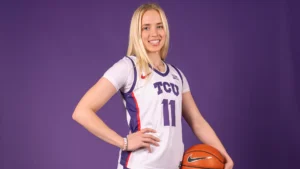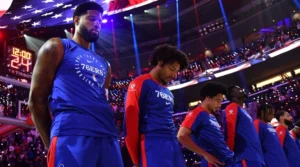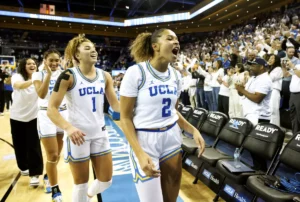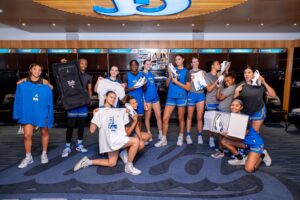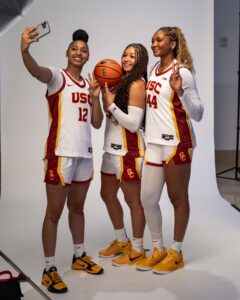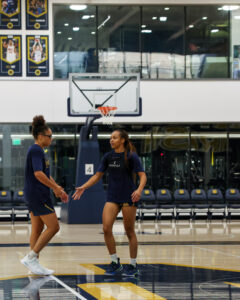Defense
Arguably the best part of Dyson Daniels’ game is his defense. Daniels is 6’8″ with a 6’11” wingspan, allowing him to guard lengthier wings, and his quickness allows him to stay in front of smaller and quicker guards. Daniels is one of the few players in this class that can comfortably guard the 1-4 positions. His versatility allows him to fit in any defensive system.
However, the most intriguing part is his on-ball defense. Daniels uses his low defensive stance and long arms to dig into ball-handlers and knock the ball loose. His long strides allow him to stay in front of ball-handlers with more wiggle. Sometimes, he separates himself too much from the offensive player. Dyson occasionally can recover because of these long strides, which leads to some highlight chase-down blocks and tight contests, but also to open looks at the rim when he overshoots and can’t recover.
His ability to navigate screens helps him stick with his assignment, often blowing up plays and forcing offenses to reset. His defensive style is swarming, giving ball-handlers little room to breathe and forcing them to make precise decisions. Smaller ball-handlers get swallowed by his size, while larger players struggle to get past him due to his speed.
Off-ball, Dyson reads the offense exceptionally well. Often one of the lead communicators on the defensive end for Ignite, Dyson’s understanding of the opponent’s personnel and ability to read what comes next allows him to be an elite help defender and off-ball threat. He often can cover multiple passing lanes, especially on cross-court passes, and his quick hands created many deflections (3.9 per game, which would rank top 2 in the NBA among guards). Forcing three turnovers a game and averaging nearly three stocks (steals + blocks) per game, Dyson’s defensive intensity affects the on-court game and the box score.
Another strength of his defensively is simply his motor. Dyson gets back on defense, often stopping open looks at the rim. His discipline and patience allow him to not foul in these situations, making it challenging for transition players to finish over him. It is essential to have players willing to get back on defense, and Dyson was the first one back more often than not for Team Ignite. His overall hustle (re: the forced turnovers and loose balls), athletic profile, and defensive discipline make him arguably the best defensive prospect in this class.
Where he struggles is in weight and footwork. While long enough to cover space, Dyson often got outmuscled by stronger wings. His lack of strength got the better of him often, and against bigger NBA players, he may get moved around quite a bit. This is more of a short-term than long-term worry, as Dyson is still growing and very young.
Under NBA strength training, he likely will put on the weight to make him effective against stronger players. Regarding footwork, his struggles can be attributed to Daniels’ naturally long strides. He often ran out of position, over-striding to stay in front of his defenders and occasionally allowing open lanes to the rim or open looks from deep. Working on short, choppy footwork when guarding on-ball and adding muscle will be key to him going from elite defensive prospect to elite defensive player.


